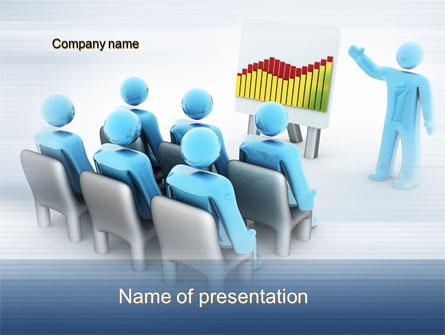by Ed Tate
Beyond connecting with your audience, are you:
Stirring them?
Moving them?
Touching them? (Not literally)
Rocking them?
Reaching them?
What is reaching an audience? I know it when I see it, and so do you, as this example from a reality TV talent show on April 11, 2009, illustrates:
Q: “What’s the dream?” A: “To be a professional singer.”
The judge rolls his eyes, scarcely concealing his skepticism. The audience snickers.
The unemployed 47-year-old contestant described herself as never been married or kissed. The audience and the judges believed her based on her appearance and their first impressions. They believed that she was unemployed, had never been married, and had never been kissed. They did not believe she had talent or could impress them, let alone reach them.
First impressions can be so wrong.
Like a predator sensing an easy kill, another judge asked:
Q: “What are you going to sing for us today?” A: “I’m going to sing ‘I Dreamed a Dream’ from Les Miserables.”
This judge couldn’t hold back his cynicism.
The atmosphere was ominous. Everyone was certain it would end badly.
And then she sang.
The audience gasped. Then they roared with approval. In four seconds, they were on their feet cheering. The singer reached her audience!
To everyone’s surprise and amazement, including judges Simon Cowell and Piers Morgan, Susan Boyle went beyond connecting with an audience. She shocked, rocked, moved and transformed her audience. She reached it.
Most of you are familiar with the story of Susan Boyle, middle-aged aspiring singer who became an overnight sensation. She gave the song, “I Dreamed a Dream” deeper meaning. Not only did listeners hear the words; they felt the words.
I’ve evaluated hundreds of presenters, and there is one element that is consistently missing: reaching or moving the audience. While many presenters can connect with their audiences, most of them cannot move or reach them.
Connecting versus Reaching an Audience
Connecting with an audience is:
Tangible: You use specific external tangible techniques to connect with the audience, including stories, statistics and quotations.
Logical: Your presentation is rational and easy to follow. It connects with the audience’s brain.
Concrete: You provide the audience with specific ideas, strategies, tools and techniques.
Safe and reliable: You use approaches that will work every time.
Situational: You reach into your “Connection Toolbox” to use the appropriate tool for the specific audience; for example, a story about an audience member.
Based on timing: It can take seconds, minutes, hours, days, weeks, years (or never) to connect with the audience.
Based on technique: The connection can be achieved using a technique.
Presents new ideas: Audiences can absorb new ideas.
Via the head: Connecting takes place via the thought process.
Reaching an audience is:
Intangible: You can’t put it into words, but you know it when you experience it.
Psychological: It’s an intuitive, emotional feeling.
Abstract: You provide your audience with faith, confidence and courage to take action.
Risky and unpredictable: Boyle risked ridicule and humiliation to pursue her dream.
Transformational: The situation does not matter. You take the audience to a place they have never been before. You change people’s lives. Now or never. The timing for reaching an audience is immediate or never.
Transparent: There is no holding back.
New perspectives/beliefs: Reaching challenges our existing perspectives and beliefs.
Via the heart: Reaching connects heart to heart.
Here are some other subtle ways that Boyle reached an audience that you can apply to your own presentations:
Stunning: Boyle’s performance stunned the audience. How can you stun your audience?
Authentic: Boyle is genuine and real. How can you show more authenticity?
Trust: The audience trusted her. How can you make your audience trust you?
A.O.E.: Boyle had an absence of ego. Check your ego at the door.
Surprise: The audience was not expecting Boyle’s gift to them. Will the audience expect your gift?
Amazement: The audience was in awe of Boyle’s gift. Why will the audience by in awe of you?
Intimate: The audience felt Boyle was communicating with each of them one on one. Make your audience attendees feel that you are talking to each of them individually.
Moving from “Connecting” to “Reaching”
Everyone is capable of reaching their audience. Start by studying people who are successful at reaching their audience, such as clergy, entertainers, other speakers and politicians. Watch their videos and listen to their audio recordings multiple times. Look for similarities and differences. Before every speech:
- Reach deeper. Go beyond your usual pre-session routine. Interview audience members before you create your speech. Find out what is important to them. Use their stores, examples, and jargon in your presentation.
- Intend to reach your audience rather than just look good on stage. During your speech:
- Be authentic and transparent. Lose the ego.
- Use long pauses to allow the audience time to reflect.
- Listen for unexpected applause or agreement from the audience.
- Listen for unexpected laughter and humor.
- Take risks. “The purpose of a speaker is not to be liked; it is to provoke thought and change behavior,” Mark Sanborn, CSP, CPAE, once told me.
Have fun!
Reaching also changes the conversation. Before Susan Boyle took the mic, everyone was skeptical of her ability. After her performance, they were raving fans. It does not matter what people say before you speak— what do they say after you speak? If you’ve reached them, they will be talking about the impact of your presentation. If you’ve been successful at reaching your audience, you will give them confidence and courage to stand up, be counted … and applaud you!
